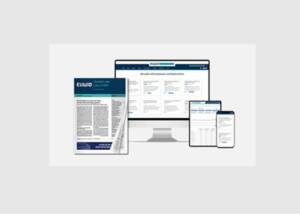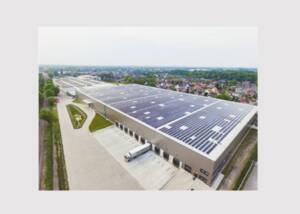Resolute Reports Preliminary Second Quarter 2021 Results
News General news
- Q2 GAAP net income of $268 million / $3.34 per diluted share
- Adjusted EBITDA of $445 million; wood products contributes $415 million to quarterly EBITDA
- Liquidity over $1 billion / net debt down to $126 million at quarter-end

Resolute Forest Products Inc. (NYSE: RFP) (TSX: RFP) reported net income of $268 million, or $3.34 per diluted share, for the quarter ended June 30, compared to net income of $6 million, or $0.07 per diluted share, in the same period in 2020. Sales were $1,140 million in the quarter, an increase of $528 million from the year-ago period. Excluding special items, the company reported net income of $300 million, or $3.74 per diluted share, compared to a net loss of $22 million, or $0.25 per share, in the second quarter of 2020.
"With benchmark prices reaching record highs in May and our best-ever quarterly shipments, we used the exceptional cash generation from our wood products segment to make lasting changes to our business and increase value for our shareholders," said Remi G. Lalonde, president and chief executive office. "We reduced debt by $180 million to our target of $300 million, declared a special dividend of $79 million payable in the third quarter, normalized capital spending and announced an additional $50 million of high-return, quick payback projects to further strengthen our wood products business. We also saw a sharp recovery in market pulp prices following the pandemic-induced dip and an encouraging shift toward tighter conditions in paper markets. With more than $1 billion in available liquidity at quarter-end, we are in a great position to pursue our transformation while remaining disciplined with our capital allocation."
Non-GAAP financial measures, such as adjustments for special items and adjusted EBITDA, are explained and reconciled below.
Quarterly Operating Income Variance Against Prior Period
Consolidated
The company reported operating income of $406 million in the quarter, compared to $177 million in the first quarter of 2021. The $229 million improvement reflects higher realized prices in the wood products, pulp and paper segments ($211 million), higher shipments in wood products ($43 million) and lower selling, general and administrative expenses ($10 million). The results were unfavorably affected by higher stumpage fee-driven input costs ($19 million) in the wood products segment, higher freight costs ($7 million) and the impact of the stronger Canadian dollar ($7 million).
Segment operating income variance against prior period
Wood Products
The wood products segment generated operating income of $405 million in the quarter, an increase of $184 million from the previous quarter. Supported by strong lumber demand, the average transaction price rose to $1,156 per thousand board feet, a $282 per thousand board feet, or 32%, improvement from the previous quarter. Shipments were 83 million board feet higher, reaching 575 million, and finished goods inventory dropped to 124 million board feet. The operating cost per unit (or, the "delivered cost") increased by $30 per thousand board feet, or 7%, mostly as a result of higher stumpage fees and freight costs, partially offset by a variable compensation provision in the previous quarter. EBITDA in the segment improved by $183 million, to $415 million.
Market Pulp
The company generated operating income of $30 million in the market pulp segment, an increase of $26 million from the previous quarter. The average transaction price increased by $140 per metric ton, or 22%, to $787 per metric ton, with gains in all grades. The delivered cost rose by $35 per metric ton, or 6%, due mostly to higher fiber costs and the effect of lower volume. Shipments slipped by 19,000 metric tons due mostly to an extended scheduled maintenance outage and lower production. From a historically low level in the previous quarter, finished goods inventory rose to a more normal level of 63,000 metric tons. EBITDA in the segment improved by $26 million, to $36 million.
Tissue
The tissue segment incurred an operating loss of $7 million in the quarter, $5 million wider than the previous quarter. The average transaction price decreased by $56 per short ton, or 3%, due to unfavorable product mix, and shipments fell by 4,000 short tons, reflecting a slowly recovering away-from-home market and inventory destocking in the retail space. As a result of the sluggish demand, the company recorded downtime in the quarter, and maintained finished goods inventory at 8,000 short tons. The impact of downtime contributed to an increase in the delivered cost of $295 per short ton, or 16%. Segment EBITDA fell by $6 million, to negative $3 million.
Paper
The company incurred an operating loss of $7 million in the paper segment in the quarter, $17 million narrower than the previous quarter. The average transaction price rose by $39 per metric ton, or 7%, and shipments improved by 4,000 metric tons, mostly due to a gradual recovery in global markets. The delivered cost improved by $13 per metric ton quarter-over-quarter, or 2%, with a seasonal reduction in energy expenses and cost savings from the indefinite idling of the Baie-Comeau and Amos (Quebec) newsprint mills in the previous quarter, offset in part by higher planned maintenance costs. Finished goods inventory decreased by 15,000 metric tons, to 72,000 metric tons. Segment EBITDA improved by $18 million, to $9 million.
Consolidated quarterly operating income variance against year-ago period
The company reported operating income of $406 million in the second quarter, compared to operating income of $6 million in the second quarter of 2020. The improvement reflects higher selling prices ($500 million) in the wood products, pulp and paper segments, offset by the stronger Canadian dollar ($39 million), higher fiber costs ($27 million), and maintenance ($14 million). At $445 million, adjusted EBITDA in the second quarter was $408 million higher than the second quarter of 2020.
Cash and Liquidity
Resolute generated $401 million of cash from operating activities in the second quarter, primarily as a result of the strong performance in the wood products segment as well as a seasonal reduction in round wood inventory. It also closed all its lumber futures positions, resulting in total losses of $49 million in the quarter.
The company repaid $180 million of debt in the quarter, representing all the amounts outstanding under the company's revolving and term credit facilities, leaving only the $300 million of unsecured 4.875% senior notes due 2026 that the company issued in January. With $177 million of quarter-end cash, liquidity stood at $1.1 billion, and net debt was $126 million.
The company repurchased 343,894 shares in the quarter, at an average price of $11.21, and it declared a special cash dividend of $1 per share of common stock, or $79 million in aggregate, which was paid on July 7 to holders of record at the close of business on June 28.
The company undertook $33 million in capital investments in the quarter as it normalizes capital spending toward its revised target of $125 million for the year. In particular, it announced additional capital investments of $50 million in its wood products segment, which it expects to complete by the end of 2022, to support its continued growth.
By quarter-end, the company had recorded cumulative softwood lumber duty deposits of $332 million on the balance sheet, including $57 million paid during the quarter.
Outlook
"Although benchmark lumber prices have come down significantly in recent weeks and remain volatile, we are confident in the underlying business fundamentals. We believe in our wood products business for the long term, with the segment representing a key pillar of our ongoing transformation. We look for the favorable pulp momentum to carry into Q3 with higher realized prices, and for stronger shipments. As conditions stabilize for paper, the price recovery should continue, which will support our cash generation strategy for this business segment. We expect a return to normal demand trends in the coming months in tissue, once the inventory rebalancing that affected the industry in the first half of the year passes. We are committed to maintain a balanced approach to capital allocation, using our free cash flow to generate value for shareholders, to build a stronger company and to drive sustainable economic activity in the communities where we operate." added Mr. Lalonde.










